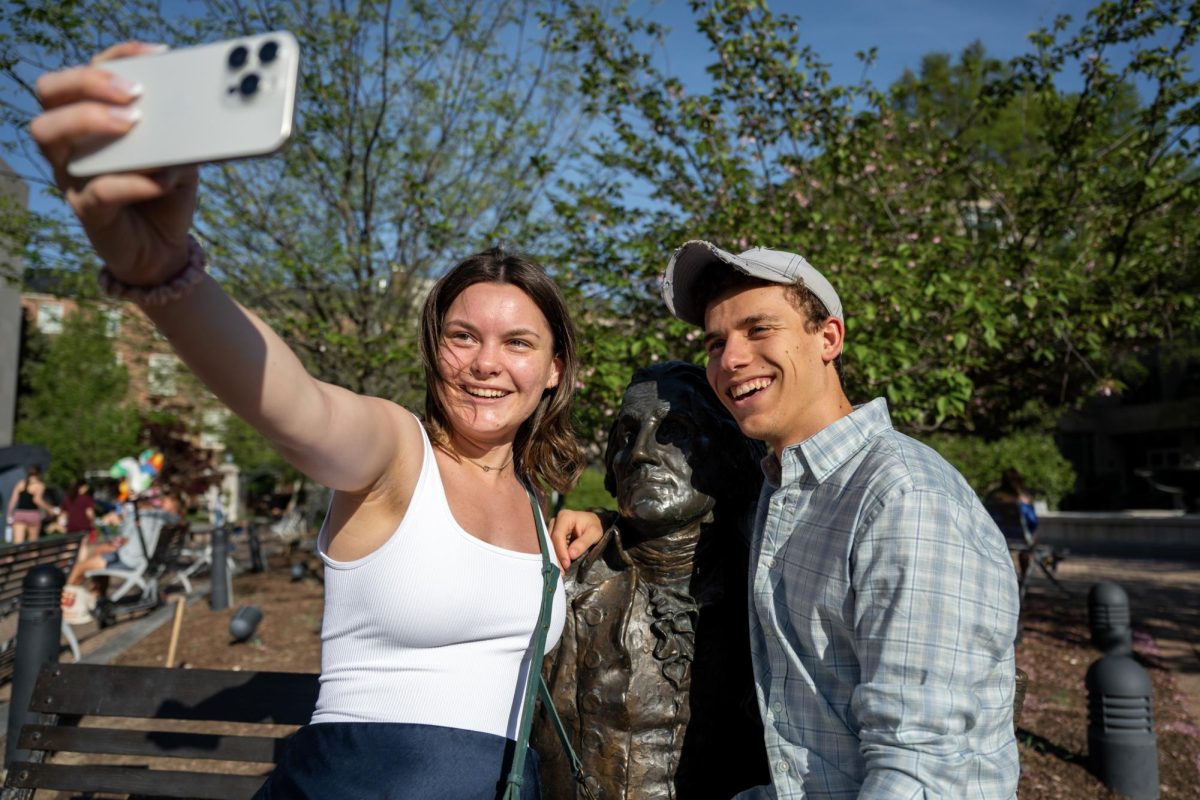Surrounded by white marble federal buildings a mere three blocks from the U.S. Capitol Building is a red brick edifice that is now home to the Museum of the Bible, the District’s newest museum.
Museum of the Bible, a $500 million private museum set to open Friday, is a 430,000 square foot space occupied by artifacts, theaters and high-tech interactive exhibits aimed at engaging visitors in the Bible’s history. Funding and artifact donations from Steve Green, Hobby Lobby’s president, have allowed for many lavish exhibits, but have also placed the museum under a cloud of criticism before doors even open.
The massive museum is eight stories tall and would take visitors nine days at eight hours per day to read every information card, see every artifact and experience every interactive exhibit, according to the museum’s website.
[gwh_image id=”1043612″ credit=”Mannequins adorned with dresses by fashion designers like Dolce and Gabbana, who have featured icons of Mary in their luxury brand, can be found in the Museum of the Bible. Kiana Lee | Hatchet Photographer” align=”none” size=”embedded-img”][/gwh_image]
Once through the doors, visitors can explore an extensive collection of bibles, as well as other texts such as the largest collection of Torah’s, displayed throughout the entire museum.
Before deciding on a location for the museum, Green and his team conducted a survey to decide which metro area it would fit best in.
“There is a love for this book in our nation, and the idea of a museum was well received and we were happy about that,” Green said in a speech during a pre-opening event Tuesday. “The survey showed that it would be best attended in D.C. and that just makes sense because here’s the heart of museums in our nation.”
After deciding on a location, Museum of the Bible incorporated as a non profit and in 2012 acquired their building at 409 Third St. SW, a certified historic landmark that once served as a refrigeration warehouse. They began construction in 2014, adding features reminiscent of the bible to the building’s exterior.
The building also has 40-foot bronze doors covered in biblical verses. David Greenbaum, the lead architect for the project, said his vision was to create a large stone wall on the facade that deviates from the original brick to mimic a bible.
[gwh_image id=”1043613″ credit=”Visitors can explore an extensive collection of bibles, as well as other texts such as the largest collection of Torah’s, displayed throughout the entire museum.” align=”none” size=”embedded-img”][/gwh_image]
“We brought in stone and stacked it unevenly for this feature,” Greenbaum said. “It is meant to mimic the deckled edges in the pages of old books.”
Aside from ancient copies and celebrity-owned bibles, like that of Elvis Presley, the museum has an exhibit called “The Books” which displays the religious texts for each branch of Christianity. Each text is accompanied by interactive flipbooks describing where each bible is primarily used, the books within it and each bible’s translation of the Book of Genesis.
Bill Lazenby, a historian at the museum, said Tuesday that while so many people own a bible, it is possible that many people are not reading the same version.
“The goal is to get across that the bible is a book that is comprised of books and not all of these books are the same,” Lazenby said. “We want to represent that diversity and give people a sense of how these differences which are important to understanding the bible.”
Guests can take a break from looking at artifacts and tour “The World of Jesus of Nazareth” on the third floor, a lifesize replica of the town where Jesus was raised. The replica is complete with descriptions of how people would have collected water or what would have been eaten at a celebratory dinner.
The museum also features a coffee shop called Milk and Honey and the Manna Cafe which serves foods inspired by biblical times, such as lamb and seasonal grains, only steps away from the 3,000-square-foot biblical rooftop garden.
For those who learn by participating, Museum of the Bible has no shortage of interactive exhibits, notably the Washington Revelations flight simulator, which takes museum goers on a virtual ride over D.C.
While the exhibits do a complete job of highlighting the history of texts and the impact of the bible on contemporary life, many critics frowned upon the museum’s financial backers and criticize the museum’s ability to truly highlight all religions and invite “all people” like their mission statement states.
The Hobby Lobby president doesn’t consider these issues to be within the frame of the museum and said it was “always the intent to be a nonsectarian museum.”
“We don’t have time to get into the political weeds or the theological weeds and that’s not our goal,” Green said. “I enjoy those theological discussions but that’s not necessarily what this museum here is trying to do.”




